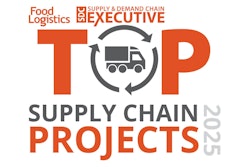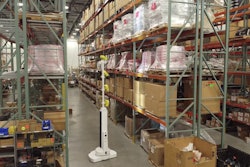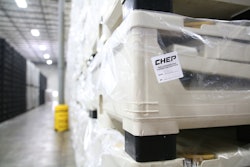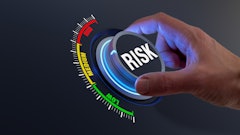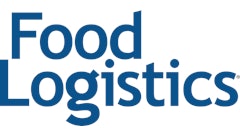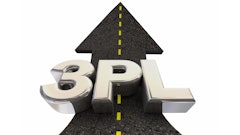
Aimed at reducing reliance on carbon-intensive goods, the European Union (EU) Carbon Border Adjustment Mechanism (CBAM) requires companies to disclose emissions data for a range of products, including raw materials and certain finished goods, imported into the EU. However, the scope of this data and the method for collecting it are creating challenges for companies. Many importers have neither the expertise in the requirement nor an understanding of how to provide the data needed for reporting and compliance.
As the policy is rolled out as part of the EU’s larger regulatory standard, the Omnibus packages, its full-scale implementation could potentially disrupt business operations for companies importing raw materials such as iron, steel, cement, aluminum, fertilizers and electricity into the EU. Companies that do not comply with the standard by Jan. 1, 2026 could face significant financial penalties.
CBAM reporting requirements have been fluid and require compliance leaders to adapt how they evaluate their supply chain’s carbon impact for reporting. This shift introduces a need for cross-functional skill sets among reporting teams to understand legal and compliance implications, environmental impact and supply chain operations. As leaders assemble experts from various functions, they can also consider the role of technology in enhancing collaboration and emissions reductions across their suppliers.
Assembling the right team of experts from the get-go
According to the EY Global Climate Action Barometer, while many companies are making progress toward reducing their emissions, some are deprioritizing initiatives that drive emissions reductions from the value chain. This trend shows organizations are still maturing their reporting systems when it comes to supplier emissions.
Not only does the CBAM require disclosure of this type of data for the first time on a large scale for many organizations, but as implementation of the rule has evolved in recent months, it also requires companies to keep up with changes related to the format and scope of reporting. As a result, compliance leaders must have teams in place that can work quickly to understand the changes and the implications of those changes related to existing reporting practices.
Organizations that integrate multifunctional expertise across financial reporting, legal and compliance matters, supply chain management, sustainability and technology will be best positioned to build reporting systems that can adjust with the regulatory changes. Modifications to the scope of the CBAM, adjustments to the timeline and evolving data requests can significantly impact reporting practices, such as collecting and identifying material information and preparing for regulatory standards, such as the Omnibus packages. With the right expertise in place, companies can more easily respond to the fluidity of the CBAM and implement systems that enable accurate reporting and increase transparency across suppliers.
Once a solid understanding of compliance requirements is achieved, technology and data experts can step in to build and implement solutions that enhance the reporting process, allowing them to spend more time analyzing data and uncovering the right insights to share with regulators.
An agile reporting system is powered by expertise and AI-enabled solutions
Once the cross-functional reporting team is in place, companies can leverage technology to provide efficient data gathering and reporting for CBAM compliance. This is important as companies navigate complex product portfolios that rely on in-scope materials. A digital-first approach enables teams to efficiently collect data from large, international supplier networks and proactively evolve dashboards and questionnaires as regulatory changes take place.
Comprehensive solutions enabled by artificial intelligence (AI) and advanced analytics can help organizations anticipate and prepare for possible reporting challenges that impact the format or scope in which suppliers must provide data. These technologies help compliance teams collect data that is not only accurate but also consistent and compliant with the CBAM.
Beyond simply gathering supplier data, AI’s capability to learn, adapt and provide real-time outcomes provides teams the flexibility to respond to evolving requirements. Platforms equipped with AI workflows and collaboration tools can support communication of data, such as those related to carbon emissions, and provide context on regulatory and compliance matters.
To meet regulators’ evolving expectations and given the nuance and complexity of the data involved, companies should equip their teams with tools such as workflow and AI, combined with regulatory expertise, operational experts, engineers and institutional knowledge of sustainability reporting requirements, to create a reliable and consistent reporting process.
Addressing the need for transparency and collaboration across the supply chain
Global organizations’ supply chains can consist of hundreds of importers, creating a complex and nuanced network. This complexity can lead to challenges in communicating accurate information, as different suppliers have differing levels of experience and use different data collection tools and processes, resulting in inconsistencies across the board. Consequently, compliance teams may struggle to properly organize and analyze the data required for CBAM reporting and compliance.
According to recent EY analysis, another top challenge leaders face today is gaining visibility into the supply chain network. A lack of visibility can impact risk management, and ultimately, it can disrupt the efficiency of the network when leaders are not aware of geopolitical or economic factors that affect quality, lead times and compliance. Compliance leaders who focus on creating transparency with technology will be equipped to proactively address these vulnerabilities and be prepared to navigate future disruptions.
A digital-first approach also helps suppliers gain access to the information they need to understand how to share emissions data in a timely and accurate manner, which includes utilizing guided questionnaires, supplier training sessions and high-level progress reports. Elevating the dialogue between organizations and suppliers will streamline the overall reporting process and enable compliance teams to use innovative solutions to optimize outcomes.
As CBAM compliance obligations evolve, the urgency for transparency and enhanced collaboration across the supply chain is growing. Compliance leaders who have assembled a cross-functional team and leveraged nimble technology, expert teams and AI-enabled reporting to streamline the collection and analysis of supplier data will be better positioned to provide the insight into their emissions’ impact that regulators require. This approach will lead to more precision in operations and drive sustainable outcomes for manufacturers and importers globally.
The views reflected in this article are the views of the authors and do not necessarily reflect the views of Ernst & Young LLP or other members of the global EY organization.





